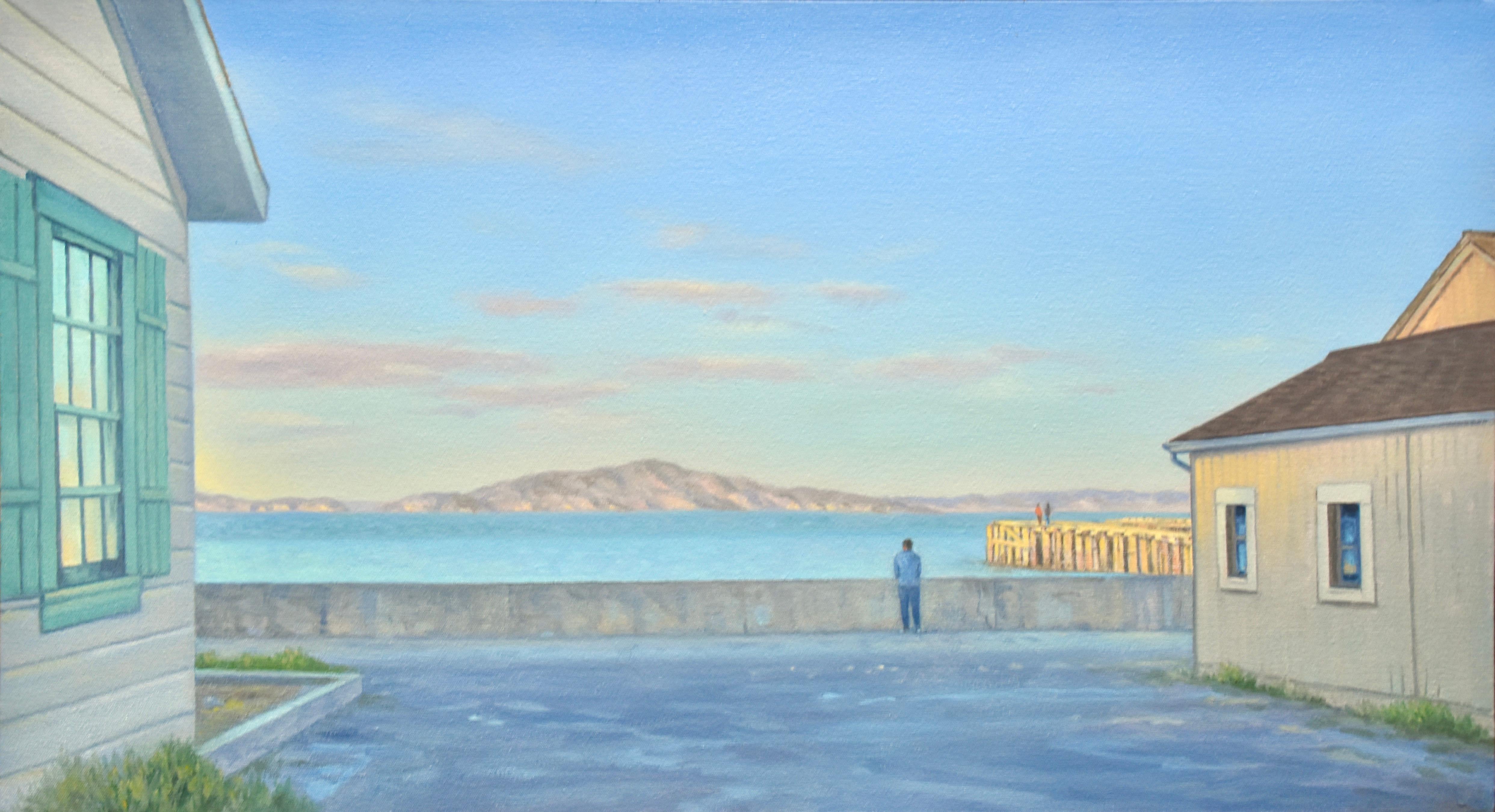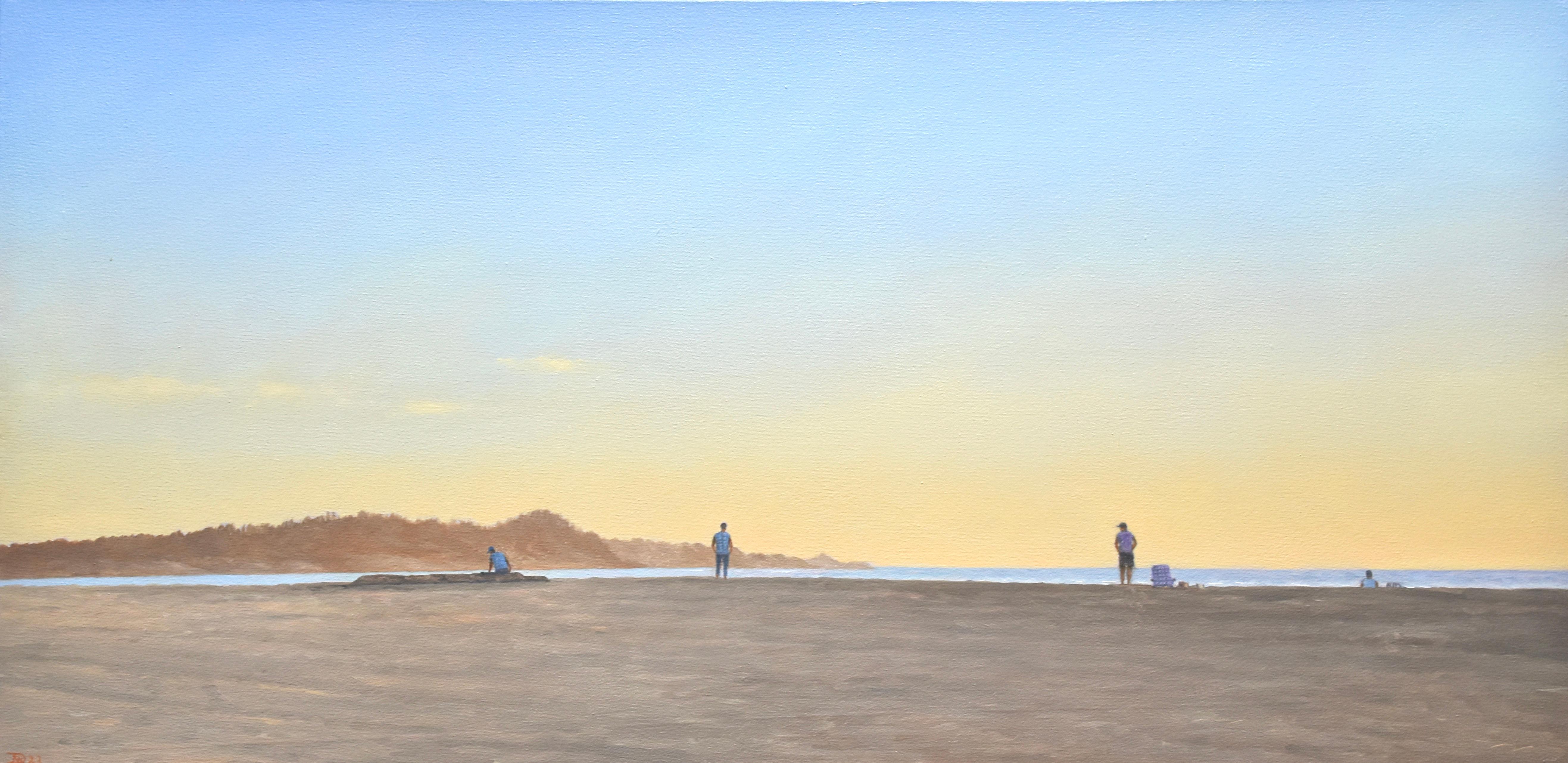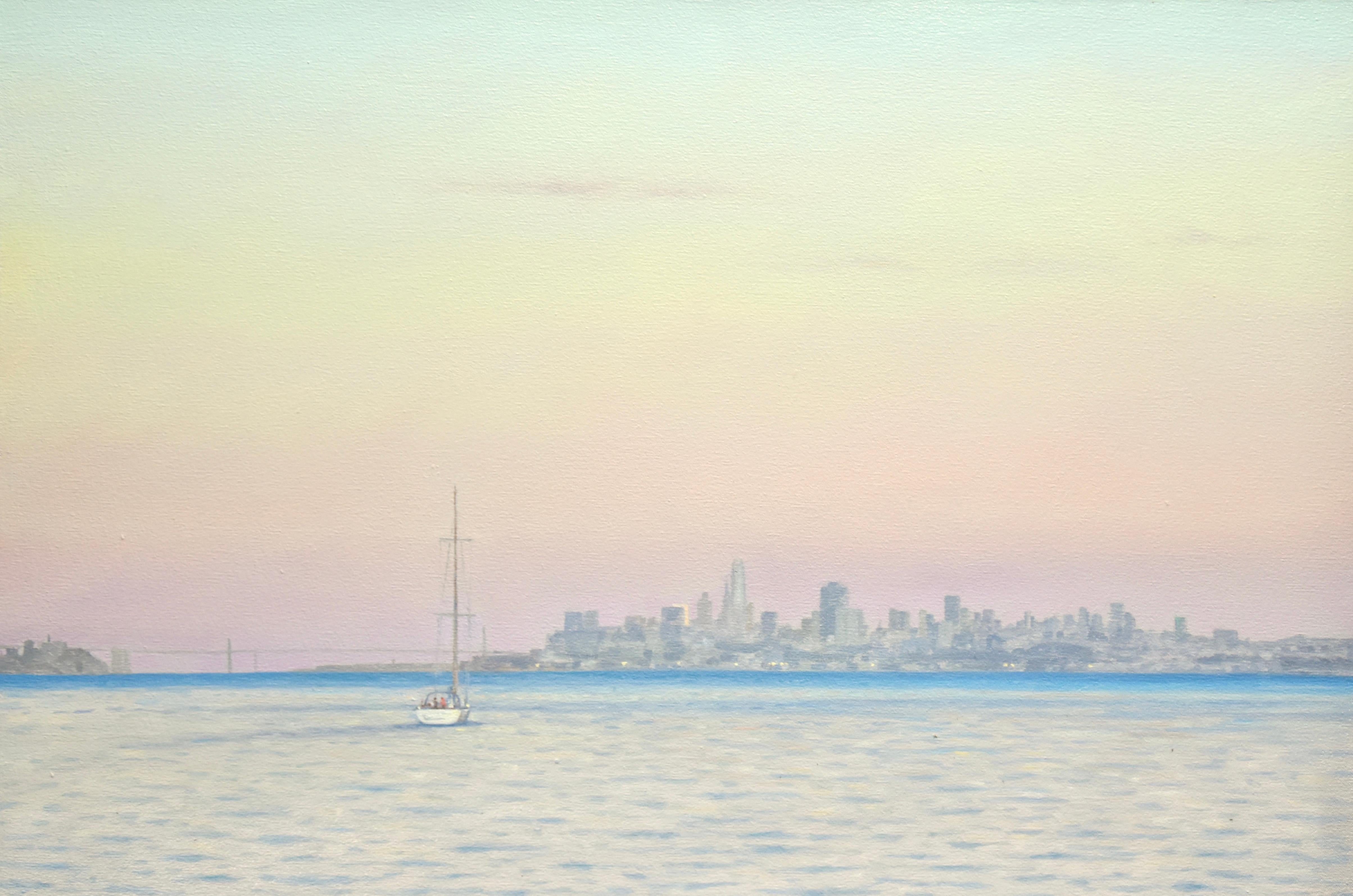Want more images or videos?
Request additional images or videos from the seller
1 of 7
William BradfordFishing Camp on the Labrador CoastN.d.
N.d.
About the Item
In 1852, twenty-nine year old William Bradford was a failing shopkeeper in Fairhaven, Massachusetts. With a wife and child at home, Bradford, by his own admission, “spent too much time in painting to succeed” in business. Rescued from insolvency by his well-to-do in-laws, this is not the beginning of a narrative that generally leads to a happy ending. Not so with Bradford, who ultimately found international fame and fortune as a painter of arctic seascapes and dramatic marine paintings.
William Bradford, the artist, was a lineal descendant of the 17th-century Separatist leader William Bradford, a founder of the Plymouth Plantation, signer of the Mayflower Compact and Governor of the Plymouth Colony. Our Bradford born to a New Bedford ship outfitter in Fairhaven, Massachusetts By the nineteenth century, this line of Bradfords were Quakers, living on the tract purchased nearly two centuries earlier by their pilgrim ancestor. Fairhaven, across the mouth of the Acushnet River from the whaling center of New Bedford was described by a New York journalist in 1857 as “the Brooklyn of New Bedford” (Home Journal, January 3, 1857). Young Bradford displayed an early predilection for the arts, but his Quaker parents were disinclined to support this particular pursuit. After working in his father’s business and then for a dry goods merchant in New Bedford, by 1849 Bradford had set up in New Bedford as a “merchant tailor” offering outfits for “those going to California,” “seamen’s clothing,” custom-tailored “piece goods” and “friend’s wear." But despite his parents’ best efforts, Bradford was an indifferent businessman, finding his passion on the shores of the New Bedford harbor, accompanied by sketch book and easel. By 1852, Bradford had determined to pursue a career as a marine painter.
Bradford would have studied books on naval architecture, marine drafting, as well as drawing instruction manuals, but more important, he closely observed the boats that crowded the wharves and waters around New Bedford. Bradford would also have benefitted by his exposure to the work of two famous marine artists working nearby, Robert Salmon and Gloucester native Fitz Henry Lane. By 1852, Bradford realized the limitations of his self-study He traveled to New York City and sought out Albert Van Beest (1820–1860), at the time the leading European marine painter in America, whom he convinced to come to Fairhaven and share a studio for two years. The two worked closely during their stay together, on several occasions collaborating on paintings. Bradford temporarily adopted Van Beest’s dramatic and expressive style, but, following their separation, he reverted to his characteristically realistic, linear approach to marine painting. Throughout his career, Bradford maintained a use of glowing light in his work that both enlivens and gives a sense of drama to his paintings, allying him with the overall painting movement now described as luminism.
While Bradford’s early practice consisted largely of ship portraits commissioned by Massachusetts ship owners, his time with Van Breest in the mid–1850s gave him new confidence and increased skill. In 1858, he contributed New Bedford Harbor at Sunset (New Bedford Whaling Museum) to the New Bedford Art Exhibition organized by his fellow townsman, Albert Bierstadt. Afterward, he accompanied Bierstadt on a sketching expedition to Newport. In 1859, Bradford left behind his provincial beginnings. Moving to Boston, he took a space in the Tremont Street Studio Building. That same year he shared an exhibition at the Williams and Everett Gallery with Gloucester native Fitz Henry Lane (1804–1865). In 1860, Bradford exhibited for the first time at the National Academy of Design in New York and took a studio in the New York Tenth Street Studio Building, which he maintained as his winter headquarters with a few interruptions until 1877.
Bradford was among the first painters to employ extensively the use of photography in his work. On his several trips to the Arctic he documented his travels by taking numerous photographs. For the most celebrated of his expeditions, a trip in 1869 to the Arctic regions, Bradford left in a ship equipped with a full photographic studio. Upon his return, he drew inspiration from the many photographs he had taken, although he seems never to have copied any of his photographs directly into paintings. He instead used photography to familiarize himself with particular details of Arctic scenery, which he then translated to his canvases.
Following his arctic voyage of 1869, Bradford spent 1872 and 1873 in England. As had many of his marine-painter forebears, Bradford found favor with the English court. He was received by Queen Victoria and exhibited some of the approximately 700 photographs taken during the expedition. The Queen was apparently impressed, for she gave Bradford the most significant commission of his career. He painted The Panther off the Coast of Greenland under the Midnight Sun (coll. H.R.H. Queen Elizabeth II, London), which the Queen subsequently installed in her library at Windsor Castle. Following the successful reception of his photographs at court, Bradford determined to publish them along with a recounting of the voyage in a single volume. In 1873, he released The Arctic Regions, a huge volume which contained 125 hand-tipped photographs. Queen Victoria was its first subscriber. Contemporary reviews of The Arctic Regions were extremely favorable, which helped establish Bradford’s reputation as a painter. Bradford’s English audience, conditioned by the “truth to nature” art aesthetic of the influential critic, John Ruskin, appreciated the verisimilitude of his work. His paintings were seen as “the only works which profess incontrovertible truth in the representation of the northern regions” (“The Arctic Regions,” The Art Journal (London) XII [1873]).
By the late 1870s, Bradford was enormously successful. He moved west to California and established a studio in San Francisco. He painted such familiar West Coast landscapes as Mount Hood and Yosemite, much the same as his friend Albert Bierstadt, with whom Bradford earlier had shared space in New York’s Tenth Street Studio. In the late 1880s he returned east, where he continued to paint until his death in 1892.
- Creator:William Bradford (1823-1892, American)
- Creation Year:N.d.
- Dimensions:Height: 13.25 in (33.66 cm)Width: 20.5 in (52.07 cm)
- Medium:
- Movement & Style:
- Period:
- Condition:
- Gallery Location:New York, NY
- Reference Number:
About the Seller
5.0
Recognized Seller
These prestigious sellers are industry leaders and represent the highest echelon for item quality and design.
Established in 1952
1stDibs seller since 2010
32 sales on 1stDibs
Typical response time: 7 hours
Associations
Art Dealers Association of America
- ShippingRetrieving quote...Ships From: New York, NY
- Return PolicyThis item cannot be returned.
More From This SellerView All
- Strawberries Strewn on a Forest FloorBy William Mason BrownLocated in New York, NYWilliam Mason Brown was born in Troy, New York, where he studied for several years with local artists, including the leading portraitist there, Abel Buel Moore. In 1850, he moved to ...Category
19th Century American Realist Landscape Paintings
MaterialsCanvas, Oil
- Saint-Malo, BrittanyBy William Stanley HaseltineLocated in New York, NYThe career of William Stanley Haseltine spans the entire second half of the nineteenth century. During these years he witnessed the growth and decline of American landscape painting, the new concept of plein-air painting practiced by the Barbizon artists, and the revolutionary techniques of the French Impressionists, all of which had profound effects on the development of painting in the western world. Haseltine remained open to these new developments, selecting aspects of each and assimilating them into his work. What remained constant was his love of nature and his skill at rendering exactly what he saw. His views, at once precise and poetic, are, in effect, portraits of the many places he visited and the landscapes he loved. Haseltine was born in Philadelphia, the son of a prosperous businessman. In 1850, at the age of fifteen, he began his art studies with Paul Weber, a German artist who had settled in Philadelphia two years earlier. From Weber, Haseltine learned about Romanticism and the meticulous draftsmanship that characterized the German School. At the same time, Haseltine enrolled at the University of Pennsylvania, and took sketching trips around the Pennsylvania countryside, exploring areas along the Delaware and Susquehanna rivers. Following his sophomore year, Haseltine transferred to Harvard University. After graduating from Harvard in 1854, Haseltine returned to Philadelphia and resumed his studies with Weber. Although Weber encouraged Haseltine to continue his training in Europe, the elder Haseltine was reluctant to encourage his son to pursue a career as an artist. During the next year, Haseltine took various sketching trips along the Hudson River and produced a number of pictures, some of which were exhibited at the Pennsylvania Academy of the Fine Arts in the spring of 1855. Ultimately, having convinced his father that he should be allowed to study in Europe, Haseltine accompanied Weber to Düsseldorf. The Düsseldorf Academy was, during the 1850s, at the peak of its popularity among American artists. The Academy’s strict course of study emphasized the importance of accurate draftsmanship and a strong sense of professionalism. Landscape painting was the dominant department at the Düsseldorf Academy during this period, and the most famous landscape painter there was Andreas Achenbach, under whom Haseltine studied. Achenbach’s realistic style stressed close observation of form and detail, and reinforced much of what Haseltine had already learned. His Düsseldorf training remained an important influence on him for the rest of his life. At Düsseldorf, Haseltine became friendly with other American artists studying there, especially Emanuel Leutze, Worthington Whittredge, and Albert Bierstadt. They were constant companions, and in the spring and summer months took sketching trips together. In the summer of 1856 the group took a tour of the Rhine, Ahr, and Nahe valleys, continuing through the Swiss alps and over the Saint Gotthard Pass into northern Italy. The following summer Haseltine, Whittredge, and the painter John Irving returned to Switzerland and Italy, and this time continued on to Rome. Rome was a fertile ground for artists at mid-century. When Haseltine arrived in the fall of 1857, the American sculptors Harriet Hosmer, Chauncey B. Ives, Joseph Mozier, William Henry Rinehart...Category
19th Century American Realist Landscape Paintings
MaterialsCanvas, Oil
- View of Gravesend BayLocated in New York, NYThomas Satterwhite Noble, who studied in France with Thomas Couture for three years, adapted his master’s genre style to American subjects. Born on his parents’ plantation in Kentucky in 1835, Noble was the son of a wealthy rope manufacturer. His early upbringing in Lexington, the center of that state’s slave trade in the antebellum South...Category
Early 20th Century American Realist Landscape Paintings
MaterialsCanvas, Oil
- At the SpringBy Joshua ShawLocated in New York, NYJoshua Shaw was a farmer’s son, born in Billingborough, Lincolnshire, and orphaned at the age of seven. After a boyhood of privation, he tried a number of occupations, until he finally apprenticed to a sign painter and found his métier. Shaw went to Manchester to study art, and by 1802 was in Bath, painting landscapes. In that year he began to exhibit his work at the Royal Academy in London. Essentially self-taught, Shaw achieved an impressive level of competence and versatility, producing portraits, floral compositions, still lifes, landscapes, and, cattle pieces. Shaw continued to send works for exhibition at the Royal Academy, the British Institution, and the Suffolk Street Gallery, all in London, until 1841. (Although Shaw is regularly mentioned and frequently illustrated in a host of general books on American art history, as well as included in numerous historical survey exhibitions, the only monographic study of this artist is Miriam Carroll Woods, “Joshua Shaw [1776–1860]: A Study of the Artist and his Paintings” [M.A. thesis, University of California at Los Angeles, 1971]. Apart from short biographical sketches in various dictionaries and museum collection catalogues, the two most interesting references, both contemporary, are John Sartain’s personal recollections in The Reminiscences of a Very Old Man, 1808–1897 [1899; reprint 1969] and an article in Scientific American from August 7, 1869, “Joshua Shaw, Artist and Inventor.” The article quotes extensively from an autobiographical document in the possession of Shaw’s grandson that Shaw prepared for William Dunlap...Category
19th Century American Realist Landscape Paintings
MaterialsCanvas, Oil
- Mt. Etna from TaorminaBy Thomas FransioliLocated in New York, NYThomas Fransioli, born in 1906 in Seattle, Washington, trained as an architect at the University of Pennsylvania. He worked as an architect before his service in World War II. Largel...Category
20th Century American Realist Landscape Paintings
MaterialsCanvas, Oil
- Marina Grande, CapriBy Charles Temple DixLocated in New York, NYCharles Temple Dix was born in Albany, New York, the youngest son of the distinguished statesman and soldier, General John Adams Dix. Having already visited Europe as a child, Dix re...Category
19th Century American Realist Landscape Paintings
MaterialsCanvas, Oil
You May Also Like
- Angel Island, 2023By Willard DixonLocated in Burlingame, CAOil painting by Willard Dixon featuring a figure enjoying the view of Angel Island from San Francisco. Willard Dixon, who is one of the finest American contemporary realist painters today, has painted coastal landscapes for 35 years, capturing the undeniable beauty of the West with its grand and humble spirit. The painting, with its atmospheric light and calm palette is contemporary and serene. Dixon’s work can be found in numerous distinctive private and public collections, as well as the San Francisco Museum of Art, and the Metropolitan Museum of Art and his work is collected Internationally. Artist signed and dated. A classic Dixon that will sure to bring those who view it a life time of pleasure. Angel Island, painted in 2023. the canvas is 30 X 30 inches. Oil on canvas, and traditionally framed in contemporary, minimal hardwood floater frame.Condition is new and excellent. Artist signed and dated. Ready to ship. Proudly presented by Andra Norris Gallery in California. Selected Collections The San Francisco Museum of Modern Art The Metropolitan Museum of Art The Oakland Museum The Utah Museum of Fine Art San Francisco Art Commission Shaklee Corporation Pacific Gas and Electric Company, San Francisco, CA Kemper Insurance Company, Long Grove, Il Morrison and Foerester, San Francisco, CA SSI Container Corporation, San Francisco, CA San Francisco International Airport Oxford Petroleum Company, Houston,TX California First Bank, San Francisco, CA United Pipeline, Houston, TX Security Pacific National Bank, S.F., CA Crocker Bank, Los Angeles, CA Visa Corporation, San Francisco, CA Atlantic Richfield Corporation Shell Oil, Houston, TX First National Bank of Seattle RREEF Corporation, San Francisco, CA Texas Heritage Society Genstar Corporation, San Francisco, CA Sohio Corporation Skidmore Owings and Merrill, N.Y.C., NY Chemical Bank...Category
21st Century and Contemporary American Realist Landscape Paintings
MaterialsCanvas, Oil
- Angel Island, Evening, 2023By Willard DixonLocated in Burlingame, CAOil painting by Willard Dixon featuring a figure enjoying the view of Angel Island from San Francisco's Crissy Field. Willard Dixon, who is one of the finest American contemporary re...Category
21st Century and Contemporary American Realist Landscape Paintings
MaterialsCanvas, Oil
- Evening Beach, 2023By Willard DixonLocated in Burlingame, CAOil painting by Willard Dixon featuring figures enjoying an evening at a beach. Willard Dixon, who is one of the finest American contemporary realist painters today, has painted coas...Category
21st Century and Contemporary American Realist Landscape Paintings
MaterialsCanvas, Oil
- 2023By Willard DixonLocated in Burlingame, CAWillard Dixon, 'San Francisco, Dusk' was painted in 2023. The original painting is 25 X 37 inches. Framed in a contemporary minimal hardwood, 25.5 x 37.5 inches. Ready to hang and en...Category
21st Century and Contemporary American Realist Landscape Paintings
MaterialsCanvas, Oil
- Marin Islands, DuskBy Willard DixonLocated in Burlingame, CAWillard Dixon, 'Marin Islands' was painted in 2023. The original painting is 19 X 52 inches. Framed in a contemporary minimal hardwood, 19.5 x 52.5 inches. Ready to hang and enjoy ov...Category
21st Century and Contemporary American Realist Landscape Paintings
MaterialsCanvas, Oil
- On The Banks of the Green RiverBy Mark BeardLocated in Hudson, NYoil on canvas, framed This landscape was based on glass plate negatives taken by the artist's great-grandfather in the 1880s in Yellowstone National Park. Artist made raw wood frame American countryside, American West, manifest destiny, Rocky Mountains, painting of the American West, painting of the Western countryside, the great outdoors, landscape painting About the artist: A visit to Mark Beard’s studio is like discovering Michelangelo’s lair: oil paintings layer the walls, lifedrawings litter the table at the feet of heroic bronzes; ceramics, architectural maquettes are everywhere; virtuosity, in every medium. And then it gets even more interesting. Mark’s talent is so overflowing that, years ago, he needed to channel himself into alter egos. Mark invented the persona of “Bruce Sargeant,” an imagined English artist, contemporary of E. M. Forster, Rupert Brooke, and John Sloan. Mark also created Bruce Sargeant’s teacher, Hippolyte-Alexandre Michallon, a 19th-century French Academist. Michallon also taught Edith Thayer Cromwell...Category
21st Century and Contemporary American Realist Landscape Paintings
MaterialsCanvas, Oil
Recently Viewed
View AllMore Ways To Browse
The Tailor Art
West Coast Art
Along The Coast
Art On Easel
American Drew Mid Century
California Coast Painting
East Coast Paintings
California Coast Landscape Paintings
Fishing Antique
Antique Fishing Art
N Toor
Harbor D
California San Francisco Coast Painting
New England Coast
William Ship Painting
New Bedford
Queen Victoria Art
William Skilling Artist





